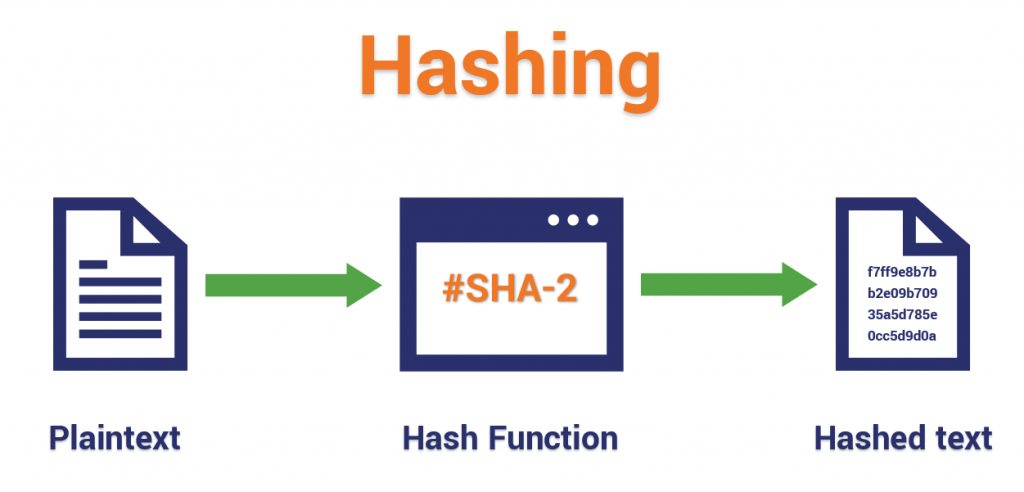Hashing Process of Cryptography

In cryptography, the hashing process involves using a mathematical algorithm called a hash function to convert input data into a fixed-size string of characters, known as a hash value or hash code. This process plays a crucial role in ensuring the integrity, authenticity, and security of data. Here's an overview of the hashing process in cryptography:
-
Input Data:
- The input data can be of any length and can include text, files, messages, passwords, or any other form of data that needs to be hashed.
-
Selection of Hash Function:
- A suitable hash function is selected based on the requirements of the application. Cryptographic hash functions are specifically designed for security purposes and exhibit properties such as irreversibility, fixed output size, and collision resistance. Common cryptographic hash functions include SHA-256 (Secure Hash Algorithm 256-bit), SHA-3, and MD5 (Message Digest Algorithm 5).
-
Hashing Algorithm:
- The selected hash function applies a hashing algorithm to the input data. This algorithm processes the input data and produces a fixed-size output, typically represented as a hexadecimal or alphanumeric string.
-
Hash Value Generation:
- The output of the hashing algorithm is the hash value or hash code. This hash value is unique to the input data, meaning even a small change in the input will produce a significantly different hash value. The hash value serves as a compact and efficient representation of the input data.
-
Irreversibility:
- Hashing is a one-way process, meaning it is computationally infeasible to reverse or derive the original input data from the hash value. This property ensures that hashed data cannot be easily reconstructed, providing a form of data protection.
-
Collision Resistance:
- A good cryptographic hash function should be collision-resistant, meaning it should be highly unlikely for two different inputs to produce the same hash value (collision). While collisions are theoretically possible due to the finite size of hash values, modern cryptographic hash functions aim to minimize the likelihood of collisions through cryptographic techniques.
-
Application-Specific Usage:
- The hash value generated from the hashing process can be used for various cryptographic purposes, including:
- Data Integrity Verification: Hash values are used to verify the integrity of data during transmission or storage. By calculating the hash value of data before and after transmission or storage, one can verify whether the data has been altered or tampered with.
- Password Storage: Hashing is used to securely store passwords in databases. Instead of storing plaintext passwords, systems store the hash values of passwords. When a user attempts to log in, the system hashes the entered password and compares it to the stored hash value for authentication.
- Digital Signatures: Hash functions are used in digital signature schemes to create a unique representation of a message or document. The hash value of the message is encrypted with the sender's private key to create a digital signature, which can be verified using the sender's public key.
- Blockchain Technology: Hash functions are fundamental to blockchain technology, where they are used to link blocks of data together in a chain. Each block contains the hash value of the previous block, creating an immutable record of transactions or data.
Overall, the hashing process in cryptography provides a critical mechanism for securing data, verifying integrity, and facilitating various cryptographic applications in modern computing environments.
Thank you,
